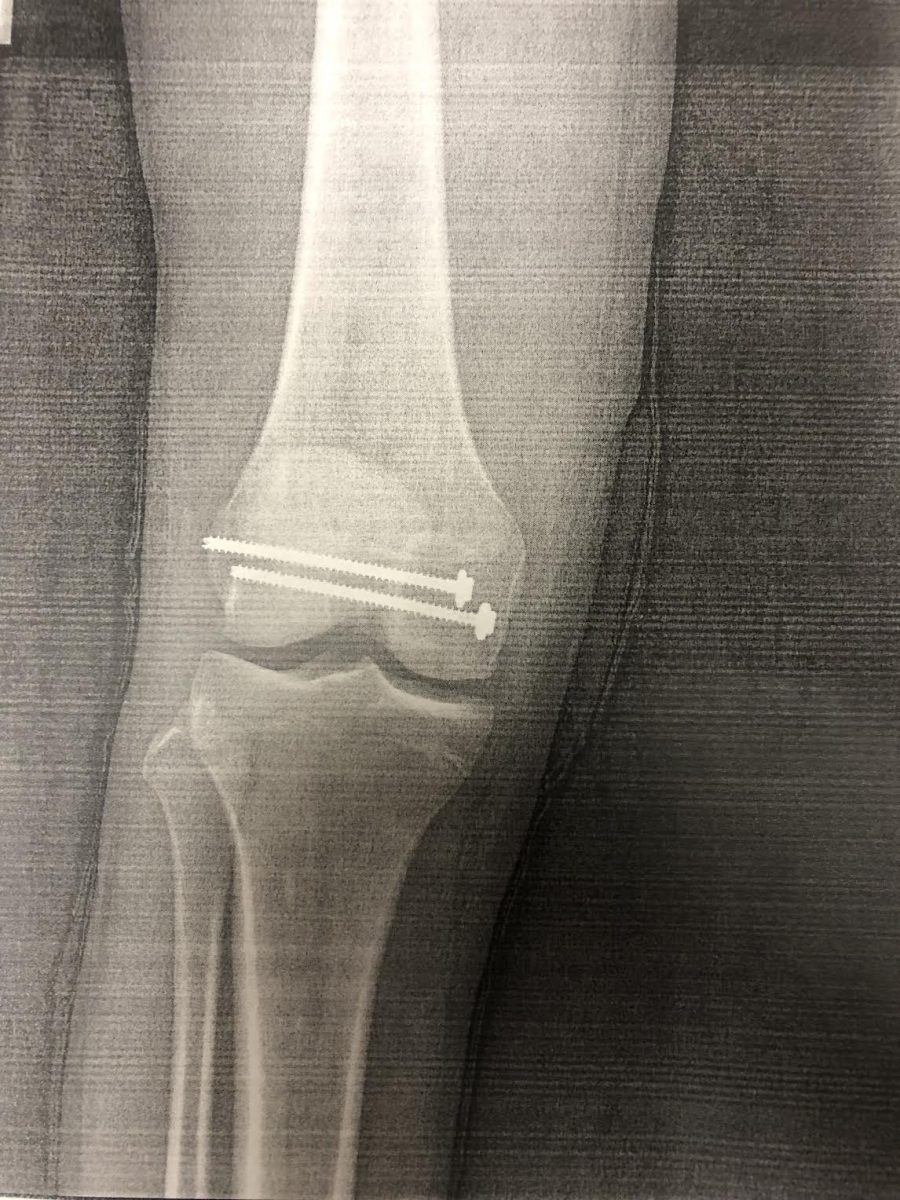Winter is a time of luscious snowfalls, beautiful ice crystals—and danger.
Much of the danger lies in the roads that we travel every day to go to school, work, practice, grocery shopping, and much more. You may sigh every time your mom tells you to drive carefully, but she’s definitely got a point. Vehicles have been manufactured to the highest safety standards, but it won’t hurt to prepare yourself for any situation, especially if your car is having trouble with the weather.
Antioch Community High School Driver’s Ed. teacher and P.E. department chair Teri Klobnak passed on her advice for these winter months.

Keep these items in your car to keep your vehicle free of snow.
“Sometimes this type of weather can catch people off guard a little bit,” said Klobnak. Start this year off right by taking a few minutes to put together a simple emergency kit to stow in your vehicle.
1. When you’re stuck: shovel, windshield scraper and/or broom
Store a shovel in your car and dig around the tires to regain traction, and then use a scraper to clear those windshields of snow that accumulated while you were working on the tires. Klobnak suggested a child’s shovel for a small and portable tool for the backseat. A broom can also help clean off the top of your vehicle and other hard-to-reach areas.
Klobnak said that she was unprepared for the first snowfall of the year and didn’t have a scraper in her car because she had taken it out for the summer. That’s why it’s so important to take the time to restock your vehicle and make it weather- and accident-proof.
2. When you’re blind: flashlight and candle

Store candles and flashlights in your vehicle for an emergency.
This seems like a no-brainer, but you’d be surprised how many of us drive around without any secondary source of light for emergencies. Don’t forget to pack extra batteries and matches to keep the light going for as long as you’ll need it.
“You never know if the batteries are working,” said Klobnak about emergency flashlights. She suggesting turning the batteries upside down in the body of the flash light. This stops them from draining even while the light isn’t in use. Klobnak also stressed the importance of keeping light sources and other small emergency equipment easily accessible, perhaps in a glove compartment.
3. When you’re cold: blankets, gloves, hats, boots and hand warmers

Hats, gloves, handwarmers and a blanket are essential for keeping you warm.
“Your car may work, but your heating could go out,” Klobnak said. Especially during the winter months, the cold can be a serious threat. But even if you just have to wait an hour for a tow truck, having a blanket on hand will help you conserve body heat. Consider packing extra gloves, hats, and even boots for times when you need to fix your own car from the outside or perhaps walk to the nearest gas station. Finally, individually-packaged hand warmers are a great way to keep dexterity in your fingertips.
4. When you’re hungry: water and non-perishable food

Keep food and water handy just in case you’re stuck for a while.
It’s hard to work when you’re hungry, and energy from food is even more important if you’re stuck in poor weather waiting for help. Stick a few cracker packs or granola bars in the glove box and bottled water in the backseat, and you won’t have to worry about a growling stomach during an emergency.
5. When you’re hurt: first-aid kit
Again, this seems obvious. But if your idea of a first-aid kit involves a few crumpled bandaids and aspirin, it’s worth it to update your stock. Consider investing in a pre-made kit that contains gauze, antiseptic spray, antibiotics, cotton balls, tweezers, hand sanitizer, and hot or cold packs, along with a variety of bandages.

In the glove compartment, keep a first aid kit for minor injuries.
“Make sure you call for help, that’s the first thing,” said Klobnak. Don’t waste time trying to fix a problem yourself before calling because if it doesn’t work, you’ll already have wasted time stranded in the cold.
Other tips: always keep at least a half a tank of gas in your vehicle, the fuller the better, to keep it from freezing. Make a point to charge your phone fully before going out in bad weather and keep a car charger with you. Store jumper cables in your trunk just in case your car battery dies. Let others know where you’re headed and when you expect to arrive. Above all, don’t panic in an emergency situation. After all, now you’ll be prepared for it.












